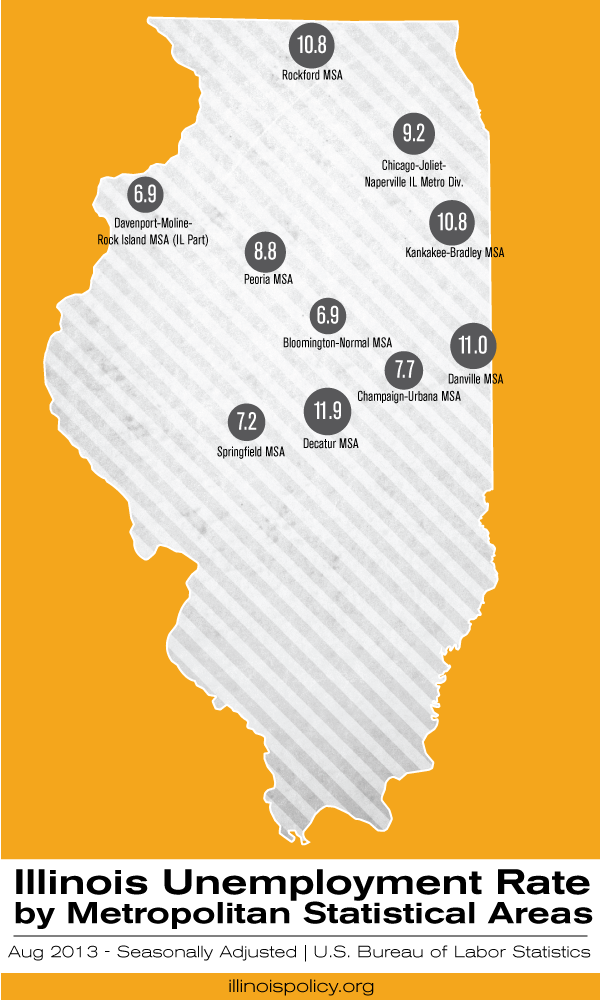Illinois’ unemployment rate stalled at 9.2 percent
The delay in unemployment reports due to the federal government shutdown has not changed Illinois’ overall gloomy jobs picture. Unemployment is still high in many cities across the state. According to the latest seasonally adjusted unemployment numbers from the U.S. Bureau of Labor Statistics, half of Illinois’ Metropolitan Statistical Areas, or MSAs, had unemployment rates...
The delay in unemployment reports due to the federal government shutdown has not changed Illinois’ overall gloomy jobs picture.
Unemployment is still high in many cities across the state.
According to the latest seasonally adjusted unemployment numbers from the U.S. Bureau of Labor Statistics, half of Illinois’ Metropolitan Statistical Areas, or MSAs, had unemployment rates higher than the state average of 9.2 percent in August. The Decatur and Danville regions are still suffering the highest unemployment, with 11.9 percent and 11 percent unemployment, respectively. 10,000 Illinoisans are unemployed in those two regions alone.
Despite the marginal improvements to the state unemployment rate over the last month, Illinoisans are still suffering from a lack of employment opportunities. Metropolitan unemployment rates are still on average 4 percentage points higher than they were in August 2007, before the recession.
The employment situation across central and southern Illinois saw a marginal improvement. A year-to-year comparison for August revealed that almost all areas saw a decrease in their seasonally unadjusted unemployment rates. Harrisburg was the only area to see a year-over-year increase, up 0.6 percentage points to 9.6 percent.
Like in the state’s metropolitan areas, the unemployment rates in Illinois’ smaller cities – or “micropolitan” areas – are still on average 3 percentage points higher now than they were in August 2007.
Five years after the end of the Great Recession, Illinois has the second-highest unemployment rate in the nation, and nearly 590,000 Illinoisans across the state remain unemployed.
To restore true prosperity to Illinois, the state must overturn the failed policies it has been following over the past decade and embrace pro-growth and pro-job policies.
Illinois can do that by lowering its corporate income tax rate to encourage business investment, reducing onerous and costly regulations that stifle entrepreneurship, and passing labor reforms to make Illinois a more attractive businesses destination.
Enacting these polices would go a long way toward restoring jobs to Illinois’ cities and towns.



